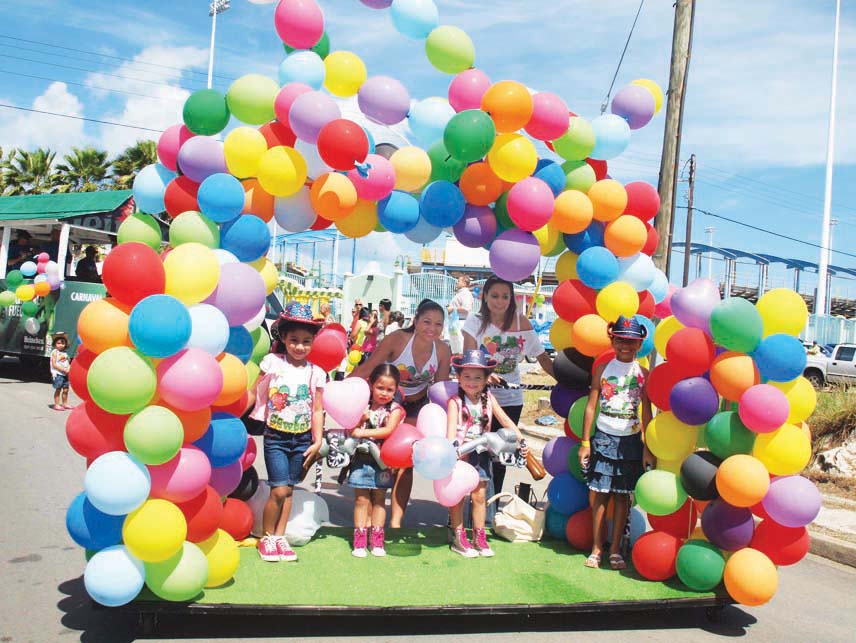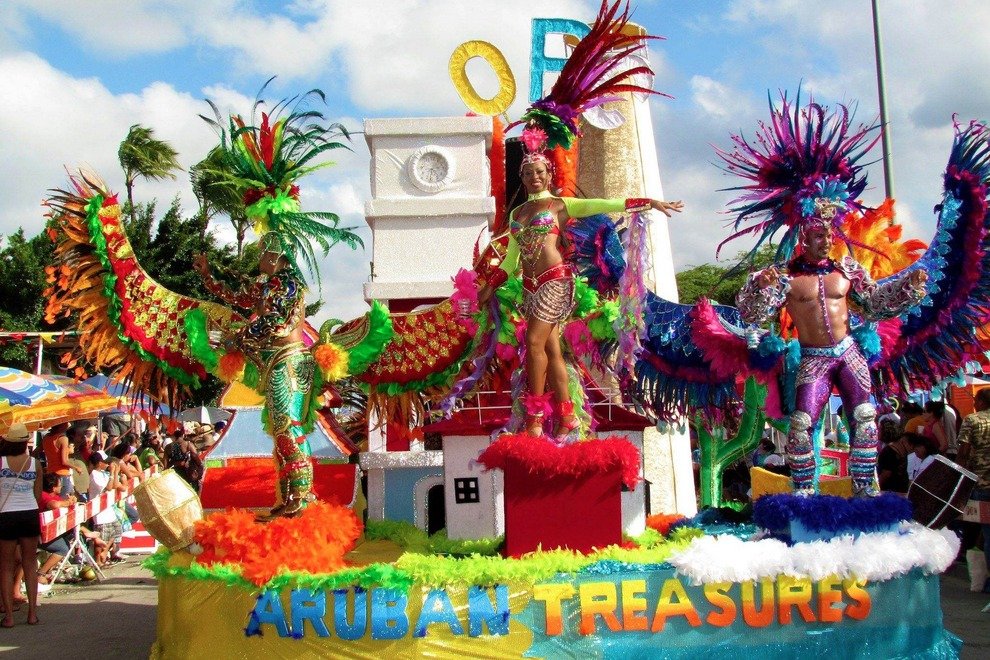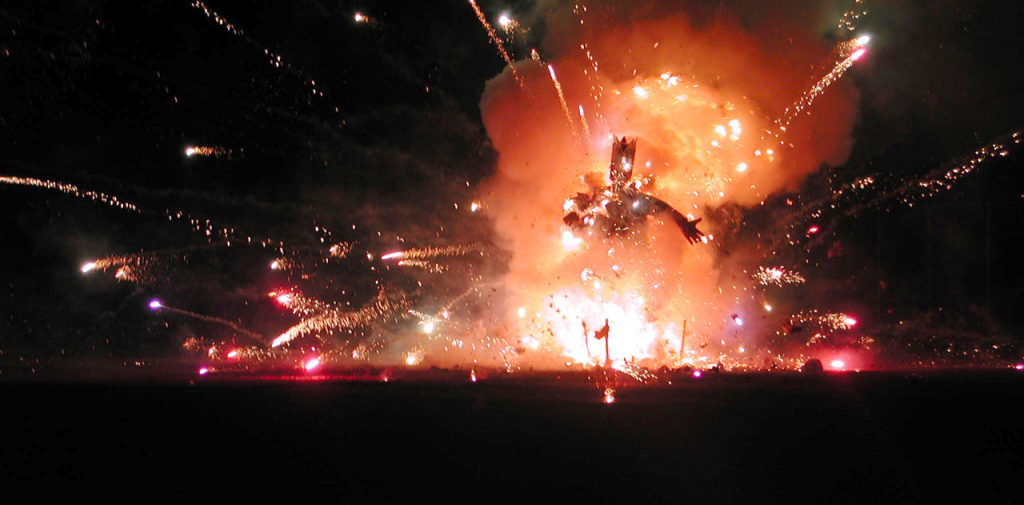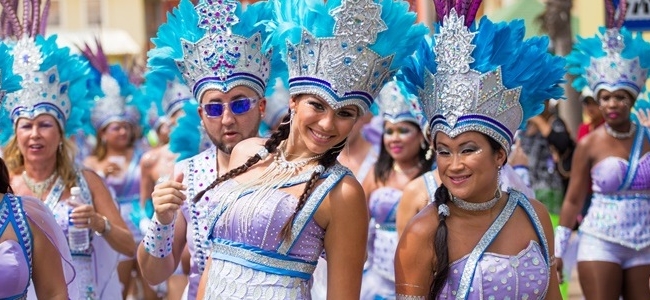The tradition of Carnival is found in many societies and cultures with roots that reach back thousands of years in both Christian and non-Christian feasts and celebrations. It was the French who brought it to the Caribbean, and Aruba’s Carnival season is one of the most exciting times to be on One Happy Island. Here are the elements you’ll find each year during Aruba Carnival in roughly the order that they are presented:
Aruba Carnival Begins with the Legends Festival
Back in 1966 the group that organizes Aruba Carnival was founded on November 11, so each year ever since Carnival season officially kicks off with a big celebration on November 11. After that, everyone starts making final preparations for the all the events to come in January and February, which are the main weeks of public celebrations related to Carnival. Something many people don’t realize is that the various groups involved in making Carnival happen start their work soon after the end of Carnival. Each group has to figure out what their theme and costume designs are going to be, whether there will be separate themes for adults and children, and then be ready to make a full presentation of the chosen themes at the Legends Festival in November.
Torch Parade (Parada di Flambeu)
This is the first big event of the New Year typically held on the first Saturday of January. It’s always organized by Aruba’s oldest social club – the Tivoli Club. This is a nighttime parade that kicks off at 8pm and is all about lighting up the night as revelers march through the streets of the island’s capital city, Oranjestad.
Prince and Jester Election (Eleccion Prins cu Pancho)
Somebody needs to rule over the events of Aruba Carnival, and that’s going to be whoever wins the Prince and Jester Election held on the second Saturday of January. As a matter of fact, Aruba’s Prime Minister will turn the entire island over to them to rule for the two weeks leading up to the grand finale weekend of Aruba Carnival. These guys have to show the crowds that they can rule with both grace and plenty of mischievous humor. The Prince presents the Carnival Queen and accompanies her at all events, and the Jester is the Prince’s personal assistant and goofy sidekick.
Children’s Balloon Parade (Parada di Blaas)
 This is one of the most beloved family events Aruba Carnival – a giant daytime parade the Sunday after the Prince and Jester Election with more balloons in it than you’ve probably ever seen in your entire life. Whether you’re an actual kid or just young at heart, people of all ages have a wonderful time at this parade.
This is one of the most beloved family events Aruba Carnival – a giant daytime parade the Sunday after the Prince and Jester Election with more balloons in it than you’ve probably ever seen in your entire life. Whether you’re an actual kid or just young at heart, people of all ages have a wonderful time at this parade.
Grand Tumba Contest
Tumba is an Aruban genre of music unique to the Dutch Caribbean with roots in both Africa and Europe. The songs created for this Carnival competition must be sung in Aruba’s native language, Papiamento. Usually held on or around the third Saturday of January, the winner will be crowned as the Tumba King or Queen. The lyrics written for each song must be related to carnival, and often include humor and satire related to current events on the island. There is also a Tumba contest for children and youth called the Tumberito Festival.
Caiso and Soca Monarch (Calypso and Roadmarch Contest)
Two more Aruban genres of music with roots in Trinidad important to Aruba Carnival are Caiso (Calypso) with a focus on song lyrics related to life on Aruba and Soca (Roadmarch) with a focus on lively rhythms to keep the parades moving and grooving. The winner of this multi-day competition spanning late January and early February will be crowned the Caiso and Soca King or Queen. There are also separate competitions for children and youth.
Carnival Queen Election and Coronation
The Carnival Queen is the central figure of Aruba Carnival. She leads parades and makes public appearances to promote Carnival. Each Carnival group has a contestant, and there are also separate children and youth competitions for the title.
Pajama Party (Jouvert Morning)
You’ll need to set your alarm clock if you want to experience this party because it begins at 4am and goes until sunrise! Lots of music and dancing are in store during this parade.
Grand Lighting Parade
In mid-February comes a hugely popular nighttime parade held in the island’s capital city of Oranjestad. Costumes of parade participants feature hundreds and sometimes thousands of tiny lights, and the floats are also decked out with all kinds of lighting, making for a dramatic presentation. Live bands provide music for each Carnival group marching in the parade.
Grand Carnival Parade
 This all-day parade on the final Sunday of February marks the culmination of Aruba Carnival. It’s the biggest parade of all with the most participants, the most amazing costumes, the most extensive floats, and lots of music to keep it all moving.
This all-day parade on the final Sunday of February marks the culmination of Aruba Carnival. It’s the biggest parade of all with the most participants, the most amazing costumes, the most extensive floats, and lots of music to keep it all moving.
Burning of King Momo
 The official end of Carnival comes with the burning a larger-than-life effigy of the “spirit” of Carnival after the Grand Carnival Parade. It represents burning up all the excesses of Carnival in order to be more disciplined during Lent. Aruba has a national holiday the following day called Carnival Monday by some and Burnout Monday by others.
The official end of Carnival comes with the burning a larger-than-life effigy of the “spirit” of Carnival after the Grand Carnival Parade. It represents burning up all the excesses of Carnival in order to be more disciplined during Lent. Aruba has a national holiday the following day called Carnival Monday by some and Burnout Monday by others.
If you’ve never experienced Aruba Carnival, you must come and participate in the island’s biggest party of the year to fully appreciate it in all its glory. You’ll also want the perfect place to stay, so check out the deluxe digs at Palm Aruba Condos you can rent for your Carnival experience. Each unit offers plenty of room to spread out and relax, along with the flexibility of a fully-equipped kitchenette, not to mention all the amenities you need for your stay on One Happy Island. We also have great package deals that include breakfast and/or a rental car for maximum freedom!


